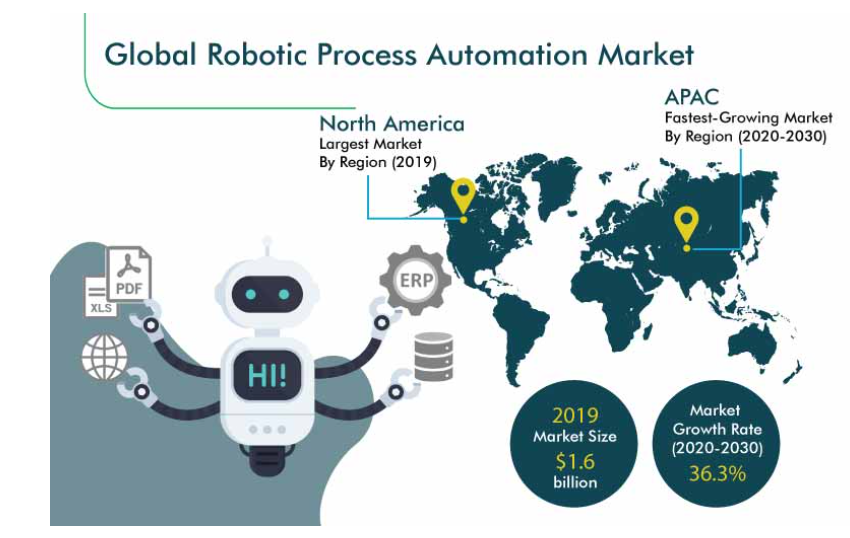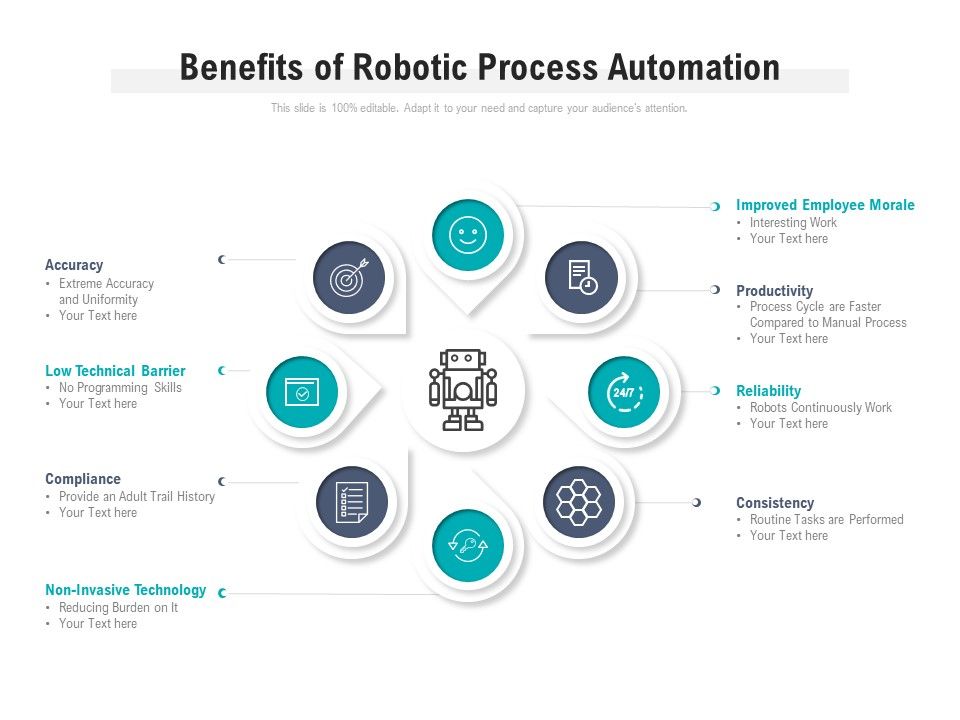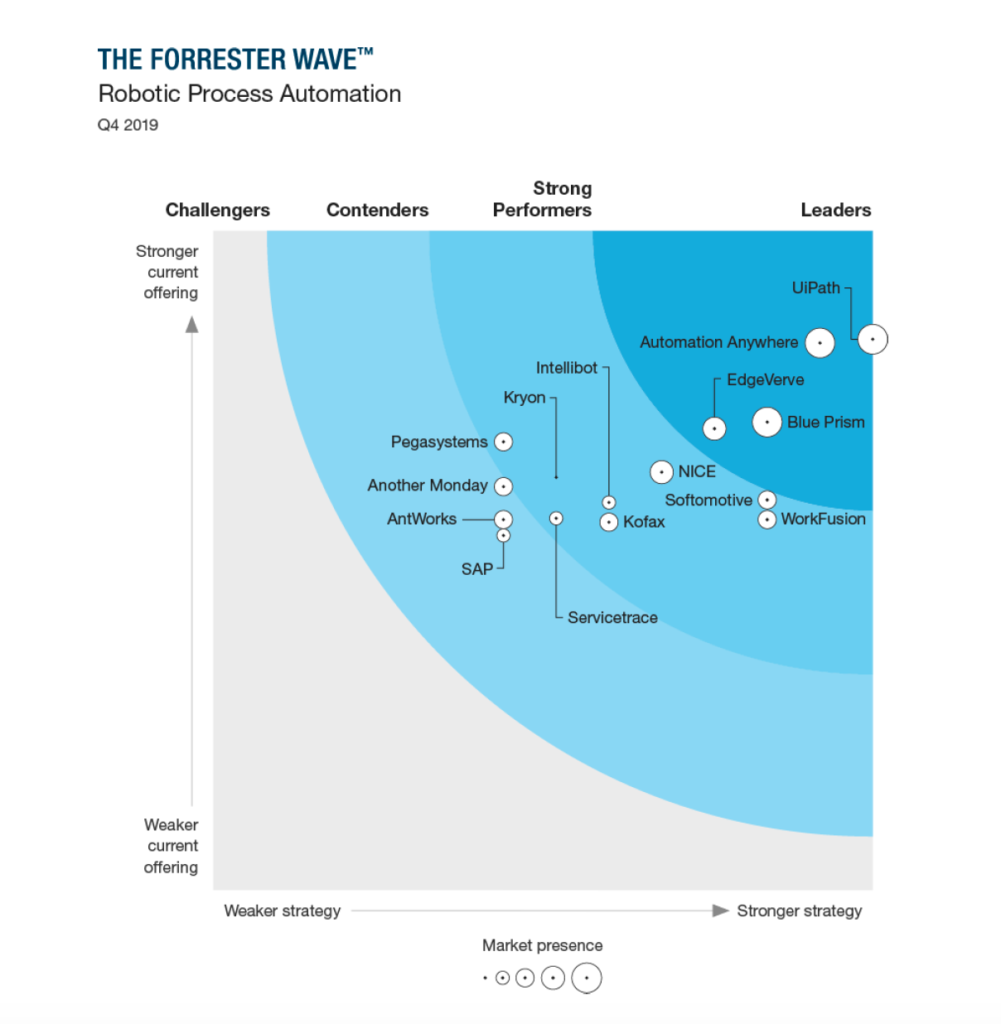Tag: Process Automation
In today’s fast-paced global business environment, process automation has become the need of the hour. Automation, when paired with advanced technologies like artificial intelligence, machine learning, and robotics, can play a vital role in transforming businesses and delivering best-in-class products and services to end customers.
Yet, the dependence on legacy systems and manual efforts makes it difficult for organizations to keep up with changing business needs and market fluctuations. Read on to learn more about the challenges organizations face in their day-to-day operations and how Power Apps helps overcome them via intelligent automation.
Common Business Challenges
As businesses look to compete in today’s volatile business environment, they come face-to-face with many challenges that restrict them from achieving their goals.
- Legacy systems: Most organizations continue to operate on a foundation of rigid, inflexible, and unsecured legacy systems. Built using proprietary technologies and offering a rather poor user experience, these systems are complex, and costly to maintain and dilute productivity. They also restrict the organization’s ability to respond to changing market conditions. It is estimated that at least $1.14 trillion is spent on the maintenance of legacy systems.
- Restricted data sharing: When teams work in silos and rely on systems that are poorly integrated, there is restricted data sharing. Outdated technology makes these systems incompatible with newer systems, resulting in poor decision-making.
- Manual efforts: Despite the emergence of automation technologies, the manual overload on the modern workforce is substantial. Employees who are compelled to do most of their tasks manually face several issues, including poor morale, excessive burnout, and the inability to meet business objectives on time. Large financial institutions incur costs upward of $500 million a year by relying on manual customer due diligence processes.
- Over-dependence on IT teams: As technology gets increasingly integrated into the day-to-day workings of any business, there is also an over-dependence on IT teams. From addressing minor user experience issues to building new apps, solving integration problems, system failures, data loss, and more, today’s IT teams are overburdened with several competing priorities, leaving no time for strategic IT work.
- Poor collaboration: With the hybrid work model here to stay, many businesses continue to face challenges in driving effective collaboration. With employees using different tools and working from different time zones, working together on projects and resolving issues in real time doesn’t come easy. According to a recent study, 86% of employees cite the lack of effective communication and collaboration as the main cause of workplace failure.
The Business Case for PowerApps
Automation seems to be the first solution organizations embrace to solve business problems, streamline processes, and enhance decision-making. But in today’s era of volatility and change, simple automation tools are not enough. These tools need to be combined with advanced AI and ML technologies to deliver true business value.
Microsoft Power Apps empowers users to build and leverage apps using the power of AI. As an intelligent automation tool, it allows users to make use of low-code/no-code capabilities and build the apps they need, regardless of their coding capability. By enabling organizations of all types and sizes to quickly build custom applications, Power Apps aids in the automation of workflows, driving high levels of agility, efficiency, and innovation in a fast-paced digital environment.
Power Apps’ AI-enabled development, low-code capabilities, and enterprise-grade governance allow organizations to:
- Simplify development and integration using trusted tools, extend app capabilities to specific tasks and roles, and reduce application development costs by 45%. For example, HR teams can build apps to get real-time visibility into employee data across training, leaves, and attendance, skills, and more.
- Automate complex processes using the power of AI and have Copilot design the app they need. For example, finance teams can curate apps to digitize physical documents, automate the KYC process, and onboard customers quickly and more efficiently.
- Improve workforce productivity via streamlined processes and improve business outcomes, resulting in business benefits of over $14.25 million. For instance, operations teams can use Power Apps to count objects in a warehouse or receive AI-powered insights into real-time inventory.
- Ensure secure data sharing by making the most of advanced security and compliance capabilities. For instance, sales and marketing teams can connect disparate systems and share critical information about customers as they progress through the sales funnel.
Streamlining Power Apps Implementation – The Role of a Partner
Power Apps can help overcome many of the challenges organizations face daily. However, like any other technology implementation, there are many things to keep in mind while embracing Power Apps:
- As a cloud-native system, Power Apps requires organizations to have some level of cloud maturity. Those not completely cloud-based are likely to have a few hurdles in realizing its full potential.
- Power Apps’ ease of use puts the governance and scalability of the apps built by citizen developers a major issue. While this might not be an issue for small or localized implementations, the consequences might be far-reaching for enterprise-wide rollouts.
- Licensing is another issue that comes with adopting Power Apps. Since the costs of embracing Power Apps depend on several factors like team size, existing Office 365 licenses, and capabilities, most organizations struggle with choosing the right plan.
- Configuring Power Apps and ensuring they meet necessary functionality, performance, and availability requirements is another challenge that organizations face.
- When employees who have created apps using Power Apps leave the organization, maintaining and managing these apps becomes difficult.
- While building apps, existing data sources are completely exposed to citizen developers, which increases the risk of data theft, misuse, or breach.
Successful Power Apps adoption requires the right approach and skill sets. A qualified partner can streamline the implementation process, allowing for long-term business benefits.
With a Power Apps partner in tow, organizations can:
- Undergo a detailed discovery session, understand the business case for Power Apps implementation, and address their immediate pain points, both from an IT and business perspective.
- Get a detailed roadmap on how best to maximize value from Power Apps implementation and accentuate enterprise-level delivery.
- Make the right decisions on which users can build apps to minimize the risks of shadow IT and data misuse.
- Build a robust data security strategy, ensuring data is always encrypted and only accessed via strong access control mechanisms.
- Understand and resolve larger business problems via comprehensive process automation, the integration of data-driven decision systems, and the adoption of collaborated enterprise analytics.
- Achieve economies of scale via well-planned integration of Power Apps with various existing enterprise applications.
- Get much-needed assistance on a Power Apps licensing model that makes the most sense for their users and business use case.
As businesses drive efforts in enabling intelligent automation across various processes, Power Apps paves the way for high levels of efficiency, reliability, and agility. Although Power Apps allows organizations to solve business problems, streamline processes, automate tasks, and enhance decision-making, an implementation partner can provide vital guidance and tips for the best results.
Learn how InovarTech can help you create true business value with automation!
With every progressive step of technological advancements, the priorities of CIOs are also changing. Process transformation and automation have gained much of leaders’ attention in recent times. Automation, the use of machines to perform work, most commonly refers to using the use of computer technologies to perform the tasks humans would otherwise do as part of their jobs. The use of computer-based process automation is widespread, with organizations deploying a broad range of software automation tools to help them reach the automation goals they set as part of their larger digital transformation objectives.

According to the December 2020 Global Intelligent Automation (intelligence AI) Study from Deloitte, *73% of organizations worldwide use automation technologies. That’s a significant increase from the *58% of organizations using such technologies in 2019. Gartner reported that organizations’ interest in a process of transformation is accelerating, demand for robotic process automation (RPA) software witnessing the growth of **19.5% from 2020.

But, RPA is not the only process automation technology that companies are leveraging to drive goals, efficiency, and digital transformation. The diversified business sector embraces certain other automation options such as business process automation (BPA) and digital process automation (DPA). Each of the three technologies offers benefits, and each has distinctions that separate it from the others.
What is robotic process automation (RPA)?
RPA technology mimics the way humans interact with software via a UI to perform high-volume, repetitive tasks. The technology creates software programs, or bots, that can log in to applications, enter data, calculate, and complete tasks, and copy data between applications or workflows as required. But RPA doesn’t inherently have intelligence or decision-making capabilities. Hence, the work best suited to RPA is rules-based. These are discrete tasks done the same way over and over, with no deviations that require human decision-making. According to Gartner, RPA represents a major portion of the automation market. Experts believe that the primary benefits of RPA are increased efficiency, lower costs, and reduced errors. RPA bots can perform tasks faster and with consistent accuracy and reliability. They can work round-the-clock without taking breaks.

Another reason for RPA’s growing popularity in the enterprise is its relative ease of use. RPA works with an organization’s existing infrastructure and applications. Also, because many vendors offer low-code/no-code RPA platforms that require little to no programming experience, business users can harness RPA, creating their own bots with minimal help from their IT departments. As such, business users are driving much of the RPA adoption.

What is digital process automation (DPA)?
DPA is a software technology used to automate a process and optimize the workflow within an automated process. A big focus of DPA is to improve employee and customer experiences by taking friction out of the workflow. The software is used to create efficiencies and enhance UX experience in various areas of the enterprise, from IT service requests to onboarding new employees and client intake.

Organizations use DPA to automate a process from its beginning to its end. Typically, DPA is used for the longer and more complex processes than the tasks that can be effectively handled by RPA. These processes can contain multitudes of decisions that, if using RPA, would create bots that are too long and too difficult to maintain.
As per a ***Forrester schema, DPA is divided into two types: DPA-deep, and DPA-wide, which is closely related to RPA:
- DPA-deep is automation that transforms and improves a business process and, because of the complexity, requires skilled technologists to implement and focus on continuous
- business users and can be managed by the business and delivered using low-code platforms and Agile methods.
What is business process automation (BPA)?
BPA automates workflows within an organization; as one step in the business process is completed, the BPA software then automatically triggers the next step. BPA software is used to automate complex, multistep business processes that are usually unique to an organization and are part of the organization’s core business functions.

Size of the business process automation system (BPA) market worldwide from 2016 to 2021
BPA’s holistic approach stems from the technology’s capability to work across the multiple enterprise applications and systems required to complete a typical business process. Organizations often first analyze and improve a business process with a BPA approach before automating it, which is different from the mimic-as-is tactic typically used in RPA.

Reworked, optimized processes using BPA remove human hands from the workflow; with human workers no longer involved in the automated process, they’re not introducing individual workarounds or unauthorized changes to the workflow. Consequently, enterprises use BPA in their digital transformation efforts for the accuracy, efficiency, and reliability it brings to each automated process.
Experts Opinion on – RPA Vs BPA Vs DPA
Some experts use BPA as an umbrella term for a wide range of process automation technologies but there are varied opinions on that concern as well.
According to Gina Schaefer, intelligent automation lead at Deloitte Consulting LLP said- “DPA, BPA, and RPA — are practically interchangeable.”
She further added – “Digital, business process and robotic process automation are essentially the same. When applied appropriately, these refer to comprehensive end-to-end process automation. Specifically, these terms refer to the use of scripted automation software to mimic human actions in the execution of rules-based ‘swivel chair’ type tasks, typically where an individual accesses and processes data from multiple applications.”

InovarTech is ready to improve your automation experience. With our smart forms and streamlined workflows, you will be ready to tackle process technologies and know-how to adapt them to your institution. Reach out to us today to get started. You can take comfort in the fact that we know process automation and how to implement them effectively. Let us deliver high-volume processes to your doorstep.
Resources:
**– https://www.information-age.com/rpa-revenue-reach-nearly-2-billion-2021-gartner-123491711/